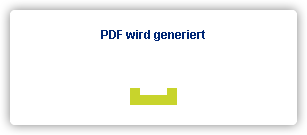Is the "Apple Store" a 3D Trademark?
With a recent ruling, the ECJ decided that an Apple flagship store can be protected as a 3D trademark. This ruling is important for many retail companies considering an additional protection of their design and corporate identity.
I. Facts of the Case
With its ruling dated July 10, 2014 (Case No.: C-421/13), the European Court of Justice (ECJ) decided that the representation of the layout of a store may be registered as a trademark under certain preconditions. It was a question here whether the so-called Apple flagship stores were capable of constituting a trademark. People who are more or less interested in technology are probably at least aware that the stores are all equipped in the same way and also have a certain recognizability value. It has probably been less well-known until now, however, that companies will also attempt to protect their stores with trademarks. It is certainly not obvious that the design of store equipment is capable of protection with a trademark for retail store services in Germany. There are as yet no German court decisions on this subject. There are various legal imponderables which the ECJ partially had to deal with in the above decision following an order for reference by the German Federal Patent Court (Bundespatentgericht – BPatG) dated May 8, 2013; Case No.: 29 W (pat) 518/13). The appellant before the BPatG whose appeal was directed against the decision by the German Patent and Trademark Office (Deutsches Patent- und Markenamt – DPMA) was Apple Inc. The DPMA had refused the extension of protection for Apple's three-dimensional trademark with an international registration in class 35 for services due to the absence of distinctive character. The description of the trademark as submitted by Apple was written in the ruling by the BPatG as follows: "The colors metallic grey and light brown shall be claimed. The trademark reflects the design and room layout of a retail store. The front of the store is made from transparent glass and is surrounded by a metallic grey façade (...). Light brown rectangular tables are placed in rows in the centre of the store, running parallel to the walls from the front to the back of the sales room. At the back of the sales room there is a light brown rectangular table with bar stools under screens which are fixed at the same height to the rear wall (...)." Protection should be granted for retail store services featuring computers, computer software, computer peripherals, mobile phones, consumer electronics and related accessories and demonstrations of products relating thereto.
II. Order for for Reference by the Federal Patent Court
The BPatG considered that the disputed sign was the "presentation of the establishment in which a service is provided". "Presentation" basically means the external presentation of an object and/or the arrangement of design elements. The trademark capability in the sense of Directive 2008/95/EC (hereinafter also referred to as the "Trademarks Directive") (corresponding regulation in German Trademark Act (Markengesetz – MarkenG) is § 3 Subsection 1) was doubtful for the BPatG here, however, irrespective of the lack of distinctive character argued by the DPMA since Art. 2 only speaks of the "packaging of goods". The BPatG therefore first wanted to know from the ECJ whether Art. 2 of the Trademarks Directive also protects the presentation of an establishment in which a service is provided.
Furthermore the BPatG raised the question of whether the sign was capable of registration pursuant to Art. 2 and 3 Subsection 1 of the Trademarks Directive. In this context it is about the distinctive character and the grounds for refusal pursuant to Art. 3 Subsection 1 of the Trademarks Directive. It was problematic here, however, that the grounds for refusal which are usually relevant for three-dimensional trademarks pursuant to Art. 3 Subsection 1 e) of the Trademarks Directive only refer to goods and not to services. On the one hand, grounds for refusal shall only be extended beyond the direct wording within very narrow limits, which the BPatG believes speaks against it being applied. On the other hand, the Trademarks Directive certainly did not intend granting an advantage to those trademarks which consist in the presentation of services over three-dimensional trademarks consisting in the presentation of goods, which would occur in case the regulations for such grounds for refusal are not applied. This would speak for applying the grounds for refusal in Art. 3 Subsection 1 e i-iii of the Trademarks Directive to the presentation of services as well.
The third problem resulted from the question of graphical representation of the visual image in the sense of Art. 2 of the Trademarks Directive. It was a question here of whether the visual representation submitted by Apple met the requirements developed by court decisions. The submitted representation did neither indicate the size of the store nor the proportions of the various elements to each other so that the required clarity and precision may be absent.
With the fourth question the BPatG wished to clarify the extent of protection for a trademark, i.e. whether a trademark for retail services only covers trade with external goods or also trade with the goods produced by the retailer himself. The BPatG cited here that this situation was not clarified by the ECJ "Praktiker" decision (ruling dated July 7, 2005 – Case No.: C-418/02), in which it was also a question of registering a trademark for retail store services.
III. Decision by the European Court of Justice
The ECJ answered the first three questions together and ultimately came to the conclusion that the question whether the wording "packaging of goods" could also cover services was superfluous. The representation submitted by Apple was a design which, according to the ECJ, is as such already covered by Art. 2 Trademarks Directive and is therefore generally capable of constituting a trademark. The ECJ considered that Art. 3 Subsection 1 e) Trademarks Directive was simply not applicable; it was not after all a sign which consisted exclusively of a shape to be registered for goods. However, the other grounds for refusal were applicable irrespective of the category of the sign, therefore not resulting in any particularities here. The ECJ also affirmed the abstract suitability of the distinctiveness of such a representation by design of the layout of a store since it could not be excluded that the addressed public recognized it as being from a particular company. This can generally be the case when the represented layout deviates considerably from what is standard or customary in the industry. However, this does not yet give any indication of the existence of distinctive character in the sense of Art. 3 Subsection 1 b) Trademarks Directive since that is determined by the competent authority in the specific case using the goods and services to be registered. The same is true for the question whether the sign is descriptive in the sense of Art. 3 Subsection 1 c) Trademarks Directive so that the ECJ could not comment here either within a reference for a preliminary ruling.
The ECJ declared the fourth question from the BPatG regarding the extent of protection for the retail store trademark to be inadmissible since it did not relate to the subject matter of the dispute in the main proceedings, i.e. the refusal by the DPMA to register the trademark. In connection with the answers to the other questions the ECJ commented on the problem of the trademark for retail store services by referring to the "Praktiker" decision: registering a sign which represents the equipment of a "flagship store" of the manufacturer of goods could not be registered only for those goods but also for services corresponding to the service classes of the Nice Agreement if there are no grounds for refusal and if the corresponding services are not an integral component of the sale of such goods.
Conclusion
What conclusion can be drawn from the ECJ ruling? First and foremost only that the design of a store is generally capable of protection under trademark law and can therefore be registered. It should be sufficient here to submit a design of the equipment of the store. Pursuant to the ECJ stating the exact proportions with indications of dimensions is not generally necessary.
However, the above does not say a lot overall meaning that it is not possible to draw the conclusion that every retail company can simply register a design of its store as a trademark for its services. In particular the grounds for refusal, such as specific distinctive character and the absence of descriptive content, must be determined by the competent authority in the specific case and reviewed by the competent national court, if necessary. Whether Apple will ultimately be successful with the extension of the trademark rights is still written in the stars not least for this reason: the ECJ indicated with respect to registering a sign for services that the corresponding services may not be an integral component of the sale of goods. Accordingly, it is possible that a three-dimensional trademark may not be extended to retail services in the sense of Apple selling its own goods. Nor has anything yet been said about the extent of protection of a trademark should it conflict with a similar sign, e.g. a similarly equipped store. Furthermore the question of trademark utilization will become relevant after the end of the utilization grace period at the latest. It will be debatable here whether slight deviations in the equipment of the store which result from the particular location lead to the fact that the trademark is not already used as a trademark. Initial steps have therefore been taken with the ECJ ruling towards trademark protection for the equipment of a store but they will most certainly not be the last.


